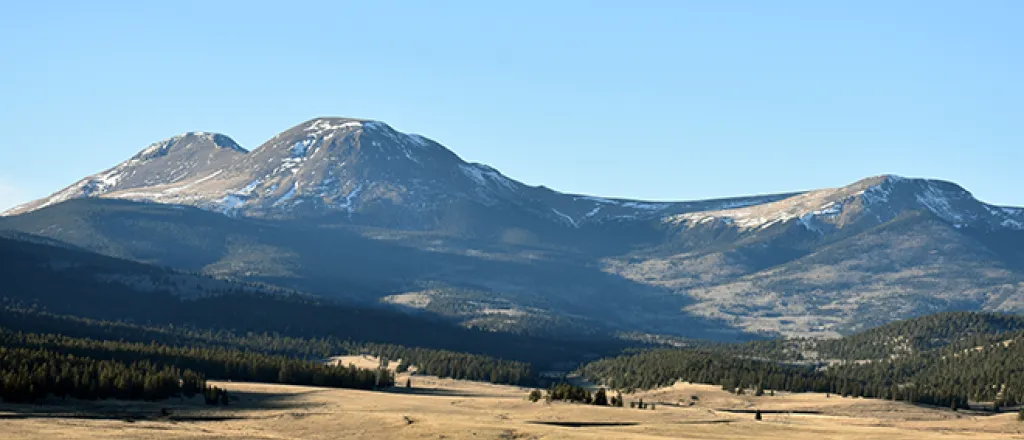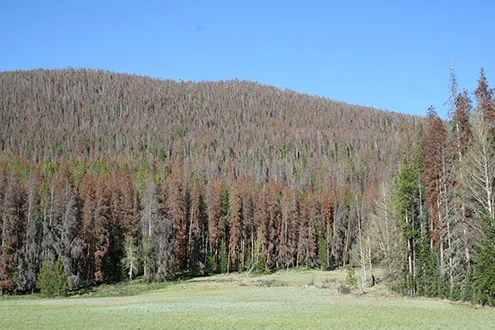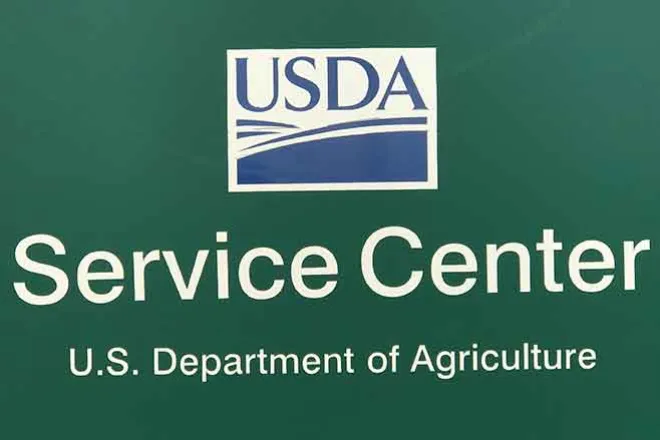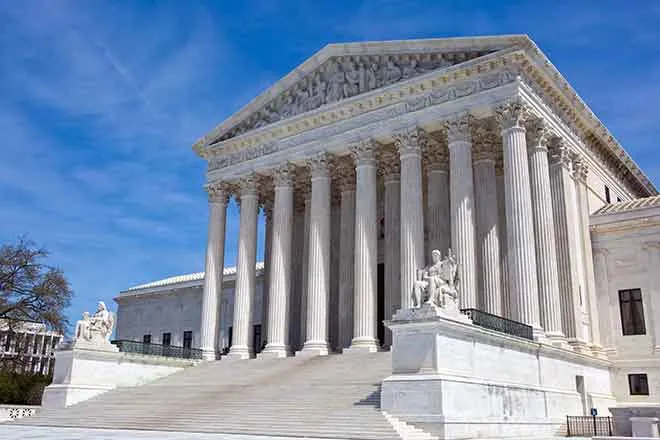
BLM officials pitch conservation-focused public lands rule at Denver meeting
(Colorado Newsline) Top officials from the federal Bureau of Land Management visited Colorado Thursday for the first in a series of three in-person meetings to brief the public on a new proposal to broaden the agency’s conservation efforts.
Proposed in March, the draft Conservation and Landscape Health rule would overhaul a variety of existing land-management procedures at the BLM, giving it clearer authority to “prioritize the health and resilience of ecosystems” across the nearly 250 million acres of federally-owned land it oversees. Agency officials and supporters of the rule say it would place conservation and outdoor recreation on level ground with the industrial uses that the BLM has long facilitated for ranchers and oil and gas drillers — while industry groups and their Republican allies fear that it could curb those uses.
“It does not give us new authorities,” Brian St. George, the BLM’s acting assistant director for resources and planning, said of the proposed rule during the meeting at the Denver Marriott West hotel in Golden. “It gives us new tools, consistent with those authorities, consistent with our land-use plans, to do work on the ground.”
Much of the proposed rule revolves around the issuance of “conservation leases,” a new mechanism that would protect certain areas from development for terms up to 10 years. Such leases would be proposed by environmental nonprofits or other applicants, either as a standalone restoration effort or as a “compensatory” measure to offset the expected impacts from development on other BLM lands.
Other provisions in the rule aim to improve the agency’s process for designating Areas of Critical Environmental Concern, one of its most restrictive land classifications, and to expand its capacity for data-gathering and monitoring ecosystem health.
St. George and Gordon Toevs, the BLM’s associate state director for Colorado, gave an overview of the proposal for a crowd of about 75 people, acknowledging “serious and sincere concerns around the rule” but correcting what they called “misinformation” about its impacts.
“It is not intended to override existing rights, privileges, use authorizations on the ground today,” St. George said. “Indeed, we find conservation leases to be compatible with many existing uses of the public lands.”
“Fundamentally, it will not impact the (oil and gas) program,” he added. “We will continue to implement the Mineral Leasing Act, and offer and hold regular onshore leasing sales consistent with current law.”
Ahead of Thursday’s meeting, more than 80 local elected officials from across Colorado endorsed the rule in a letter to BLM Colorado state director Doug Vilsack, joining dozens of conservation and outdoor-recreation groups in calling for its adoption.
“Putting conservation on equal footing with oil and gas development will help boost our local economies, preserve wildlife habitat, and safeguard clean water,” Brien Webster, public lands campaign manager at Conservation Colorado, said in a statement. “Today, Coloradans are coming together to let the BLM know that we want to preserve our way of life and ensure that future generations will always have access to our shared public lands.”
‘Multiple use’ mandate
The 250 million acres overseen by the BLM represent about one-tenth of the country’s total landmass, nearly all of which is located in the West. Under the Federal Land Policy and Management Act, the agency is charged with managing that land in a manner consistent with a “multiple use” mandate, providing opportunities for recreation and environmental protection as well as livestock grazing, mineral extraction and other industrial activities.
The Conservation and Landscape Health rule and other agency efforts under President Joe Biden’s administration represent a dramatic turnaround for the BLM after what environmental groups characterized as its “evisceration” under former President Donald Trump.
Between 2019 and 2021, the agency’s headquarters were relocated to a new office in Grand Junction, and hundreds of senior employees were reassigned to existing field offices across the West. The reorganization resulted in an exodus of experienced staffers from the agency — an outcome that environmentalist critics alleged was designed to short-circuit its permitting and review processes as the Trump administration pursued an “energy dominance” agenda that opened up more land to oil and gas development. Biden reversed the headquarters move in his first year in office.
In February, U.S. Rep. Diana DeGette of Denver and other Colorado congressional Democrats urged BLM leadership to use “all the administrative tools at your disposal” to strengthen protections for public lands. With Republicans in control of the U.S. House of Representatives, such executive-branch authority likely represents the best opportunity to expand lands protections in the near future, as environmental advocates continue to champion the goal of preserving 30% of lands by 2030 to protect biodiversity and fight climate change.
House Republicans this week slammed the BLM’s proposed rule in a hearing of the Natural Resource Committee’s Subcommittee on Oversight and Investigations, with one GOP lawmaker decrying the agency as a “climate activist organization.”
“The Biden administration continues to lack transparency, expand the power of the executive branch and ignore the will of the people, all while espousing grandiose ideas like social and environmental justice that far too often leave our rural communities farther behind,” said U.S. Rep. Paul Gosar, an Arizona Republican and the subcommittee’s chair.
BLM Director Tracy Stone-Manning briefly addressed attendees at Thursday’s meeting, urging current lease and permit holders to give feedback on the proposed rule. The agency has already received more than 66,000 public comments, and will continue to accept them until June 20.
“That’s what we are going to need over the coming weeks and months as we refine this proposal,” Stone-Manning said. “It is truly a draft. We truly want to hear from you on the ideas behind it, the intent behind it and whether we hit the mark.”
“We have a lot of threats to our public lands,” said St. George. “And I think this is a big step in helping manage some of those potential threats coming from a changing climate.”
Colorado Newsline is part of States Newsroom, a network of news bureaus supported by grants and a coalition of donors as a 501c(3) public charity. Colorado Newsline maintains editorial independence. Contact Editor Quentin Young for questions: info@coloradonewsline.com. Follow Colorado Newsline on Facebook and Twitter.
















